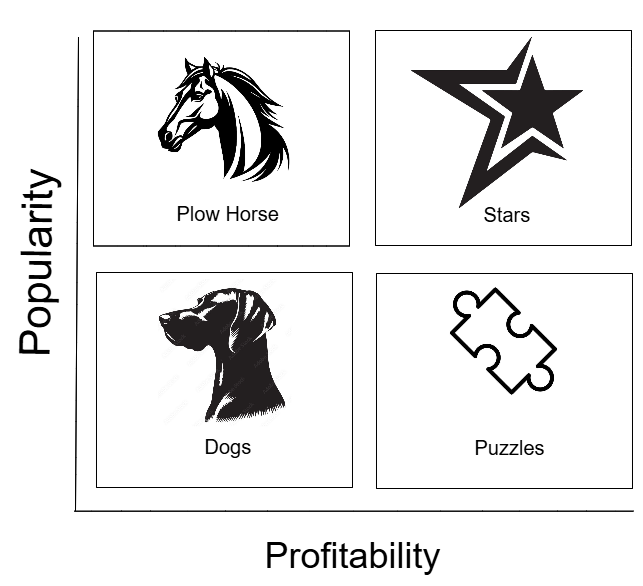The menu engineering matrix is a strategic analysis tool used in the restaurant industry to evaluate menu items based on two key factors: profitability and popularity. By plotting each item on a graph, restaurateurs can categorize their dishes into four distinct quadrants, which helps them make informed decisions about pricing, placement, and promotion to maximize overall profit.
The Four Quadrant of Menu Engineering Metrix
The matrix uses a vertical axis for popularity (low to high) and a horizontal axis for profitability (low to high). Each menu item falls into one of these four categories:

- Stars: These are dishes with high popularity and high profitability. They are your menu’s champions and often what your restaurant is known for. The strategy for these items is to maintain their quality and popularity. You can even consider a slight price increase, as their popularity can absorb it without a significant drop in sales. For example, Pasta dishes at an Italian restaurant. The cost of dry pasta and sauce ingredients is low, while the selling price can be high, making them very profitable.
- Plow Horses: These items have high popularity but low profitability. They are beloved by customers but don’t contribute as much to the bottom line due to high food costs. For these items, the goal is to increase their profitability. This can be done by slightly raising the price, reducing the portion size, or finding less expensive ingredient substitutions without compromising the dish’s appeal. For example, A steak dinner at a family restaurant. The cost of the meat is high, leaving a narrow profit margin, but it’s a popular, high-demand item that draws in customers.
- Puzzles : These are dishes with low popularity but high profitability. They have the potential to be Stars, but customers aren’t ordering them often. The challenge is to solve the “puzzle” and increase their sales. Strategies include repositioning them on the menu, giving them a catchier description, or running promotions to increase visibility. For example, A premium wine by the glass that has a great markup but is not being actively sold by the staff.
- Dogs: These dishes are the least desirable, with low popularity and low profitability. They don’t sell well and don’t make much money. Unless there is a strategic reason to keep them (e.g., they cater to a niche audience that a large group can agree on), the best course of action is often to remove them from the menu entirely to free up resources and simplify operations. For example, A specialty dessert that is expensive to make but is rarely ordered.
Conclusion
The menu engineering matrix is a concise tool that helps restaurants optimize their menus for profitability. It categorizes each dish by its popularity and profitability into four groups: Stars, Plow Horses, Puzzles, and Dogs. This framework allows managers to strategically promote Stars, adjust the price or ingredients of Plow Horses, increase the visibility of Puzzles, and removing unprofitable Dogs.

